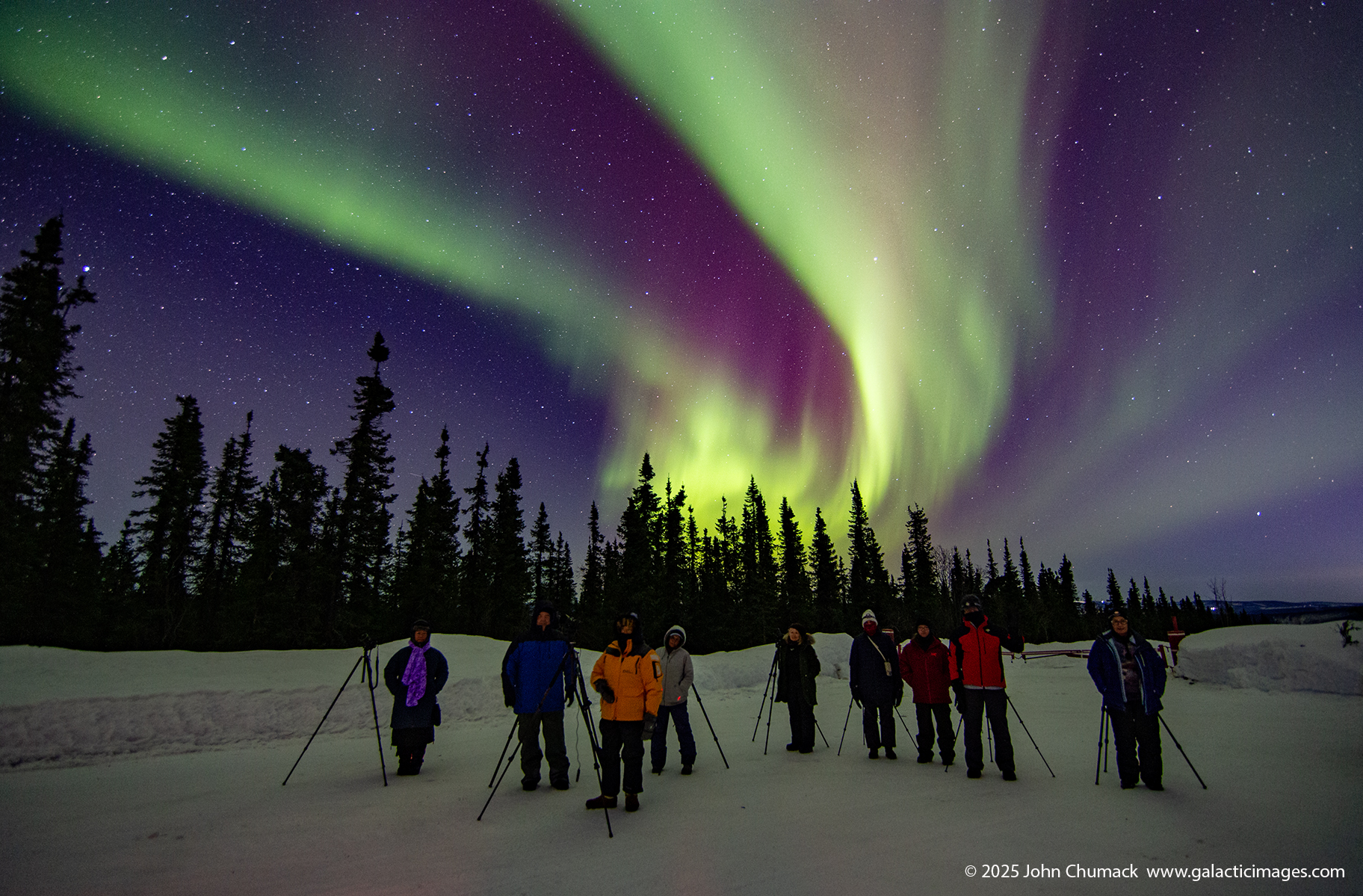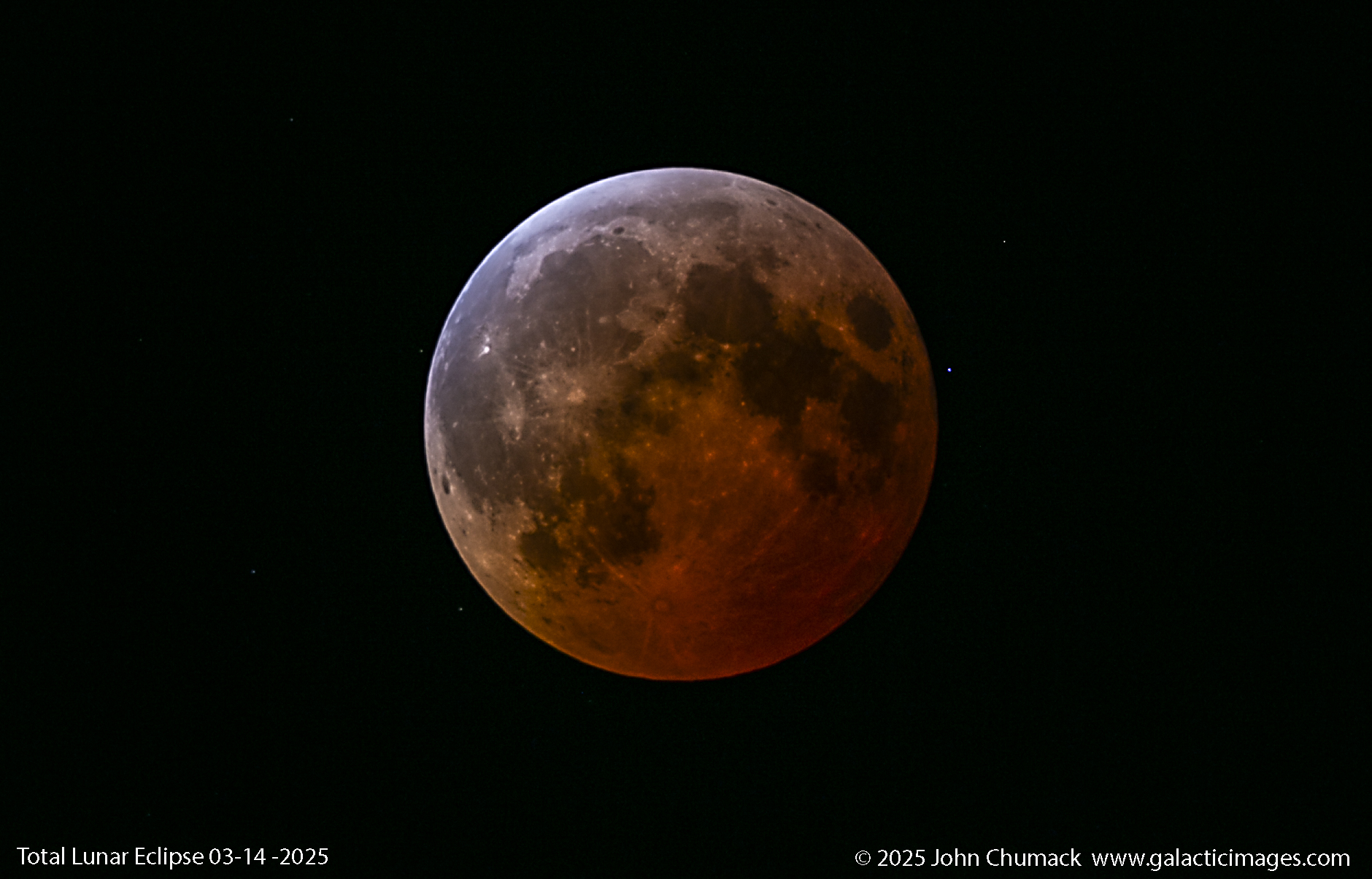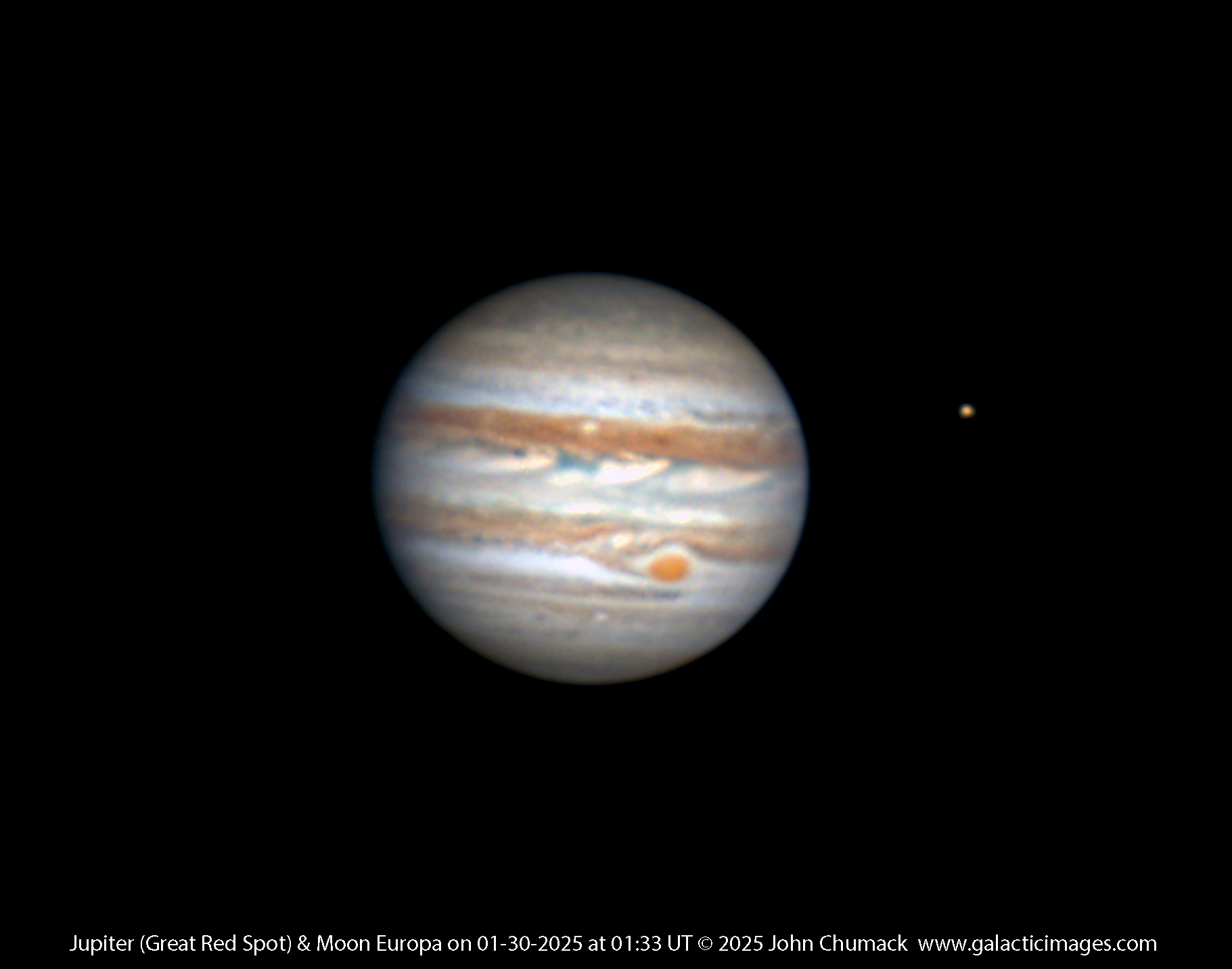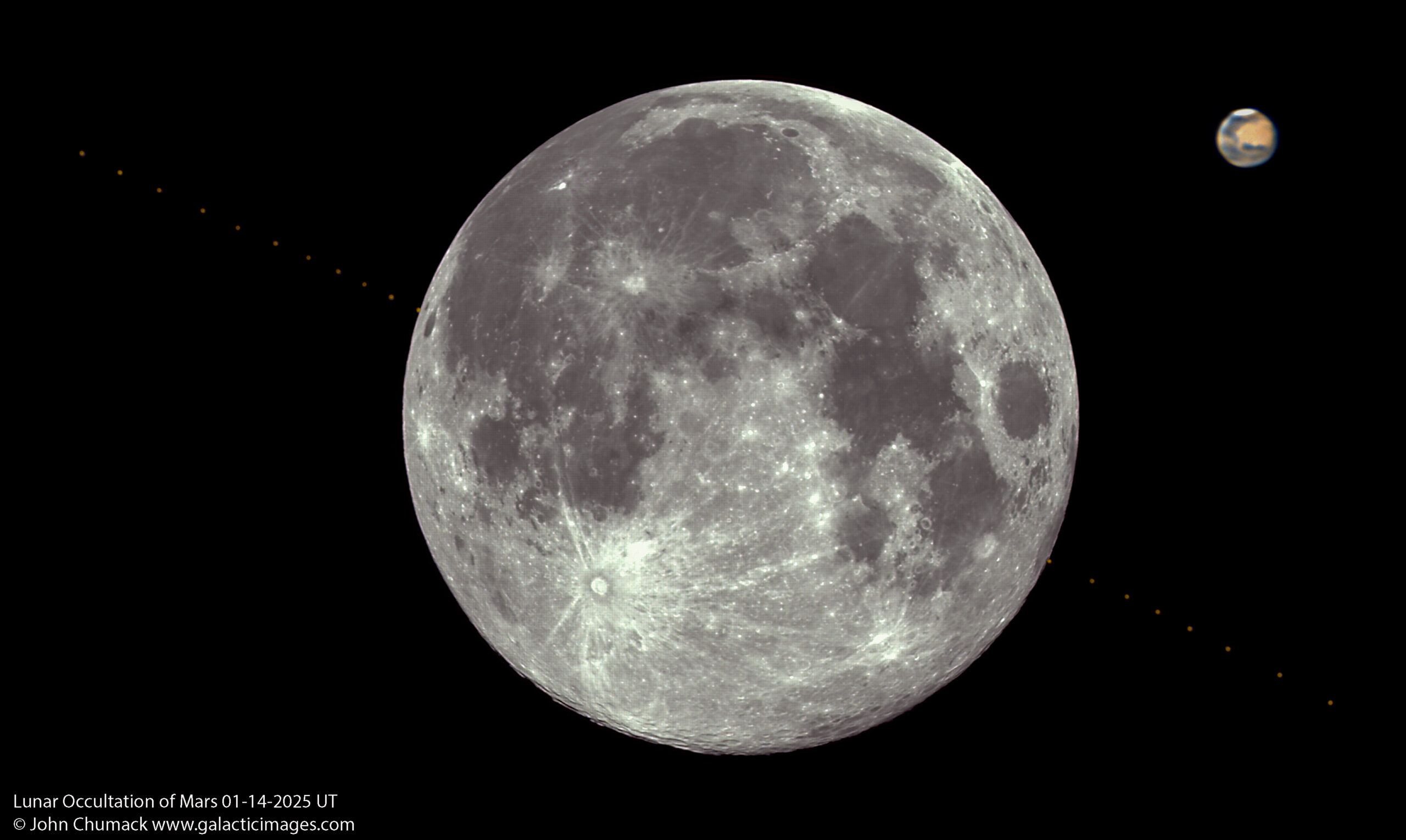Aurora Crew in Alaska on March 2025
Here are some of our 2025 Crew(Group A) under the Aurora in Alaska….
We head into the Interior for more Fantastic scenery!!! May be a few days before we get Internet and cell again….more to come later!
Best Regards,
John Chumack
www.galacticimages.com
Aurora after Sunset during twilight “Blue Hour” with bright Meteor
One of my favorite shots from this year!
Aurora after Sunset during twilight “Blue Hour” with bright Meteor(left) and the constellation of Cassiopeia covered by the Aurora.
Some of the prettiest images can be captured of the Aurora just after Sunset, during twilight as can be seen in this shot from outside of Fairbanks, Alaska on 03-22-2025.
Canon DSLR, 16-35mm lens set to 28mm, F2.8, 10 seconds, ISO 3200
Best Regards,
John Chumack
www.galacticimages.com
8mm Fish-eye view of the Aurora covering the entire sky in Alaska March 2025
Another nice 8mm Fish-eye view of the Aurora in Alaska this past March, The colors were super subtle to the eye, but under these darker skies I could easily see the Green and Reds, the Blues and purples were more difficult to see visually. The DSLR cameras being much more sensitive than the human eye easily picked up the other subtle colors. The Aurora Borealis covers most of the sky in Alaska as you are directly underneath the typical Aurora oval. I have some incredible Fish-eye time lapse sequences, I have yet to put together, but will try to post them to my YouTube channel when I get more time to work on them. They may be too large or long for Facebook reels. I wish you all could experience this with me someday!!!!
The best Natural light show on the Planet!!!
Best Regards,
John Chumack
www.galacticimages.com
Aurora Bird walking the horizon in Alaska – 03-22-2025
I was excited for our new 2025 Alaska Aurora (Group A) crew to arrive on that Sunday, while I was prepping and scouting/hiking one of our sites in Alaska, the Aurora was very active at Sunset and really kicked up crazy good by 10pm that night! It was a KP 5.6 and really put on a show of bright Super nice colors, a lot of purples too! Looking straight over my head…Here is a quick Canon DSLR, 8mm Fish-Eye Lens shot captured on 03-22-2025!
Reminds me of a profile of an Owl or bird walking on the horizon with its wings held up over its head.
Another flare just left the sun and was heading our way ….so more spectaculars Aurora views to come!
Best Regards,
John Chumack
Total Lunar Eclipse -Totality 03-14-2025
Total Lunar Eclipse 14 March 2025…up all night, but just a quick post before heading off to work,…more images to come later.
4 Inch F7 APO Refractor Telescope, AVX Mount, Canon 6D DSLR, ISO 100, 4 second exposure, Backyard Observatory In Dayton, Ohio.
Best Regards,
John Chumack
www.galacticimages.com
The Planet Mars on 01-30-2025 at 01:46 UT
Mars was showing some nice details including the Polar Ice cap, not bad for the Planet being only 14 arc-seconds in diameter.
C-11 Telescope, 2x barlow, ADC, QHY462mc Cmos Camera, 3.3ms exposures, Fire-Capture SER Video, 5,000 out of 15, 000 frames
stacked in Astrosurface, Registax6, and Adobe Raw CC 2025
Captured from my backyard Observatory in Dayton, Ohio.
Best Regards,
John Chumack
www.galacticimages.com
Jupiter with The Great Red Spot & Moon Europa on 01-30-2025 at 01:33 UT
Lunar Occultation of the Planet Mars – Reappearance 01-14-2025 UT
Lunar Occultation of The Planet Mars – Seestar 50s Sequence
The Lunar Occultation of the Planet Mars on 01-14-2025 UT
The Lunar Occultation of the Planet Mars
We were lucky enough to have clear skies for this, …here is one of my preliminary quick process shots of the Full Wolf Moon Lunar Occultation Of Mars last night, I captured both disappearance and the reappearance of Mars close-up with my C-11 Telescope from my backyard in Dayton, Ohio. I have a ton of Data to process yet and lots of Video footage from my QHY462 Camera, but thought I would toss this quick one out taken 01-14-2025 @ 02:08 UT., as it may be a while before I have the time to go through it all. More to come later!
C-11 Telescope, ADC, 2x Barlow, QHY462MC Cmos Camera.
Fire-Capture software SER Video Files.
Best Regards,
John Chumack
www.galacticimages.com











